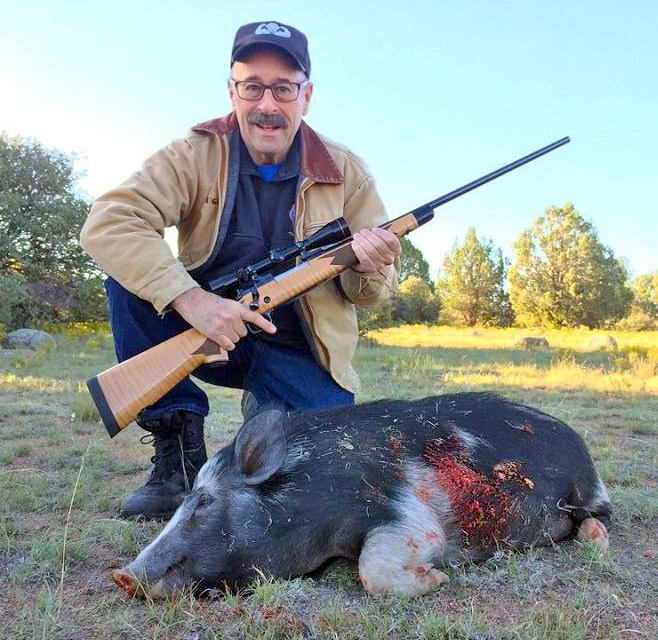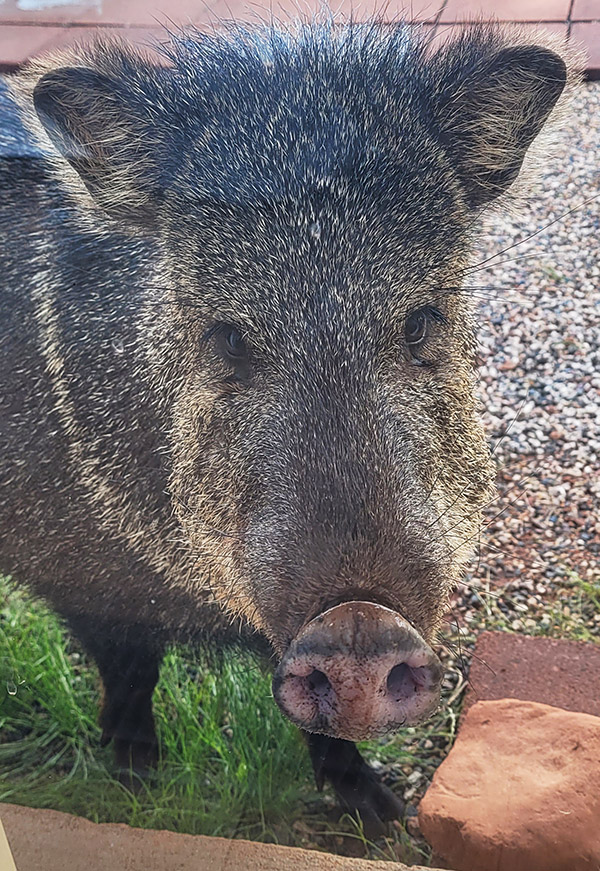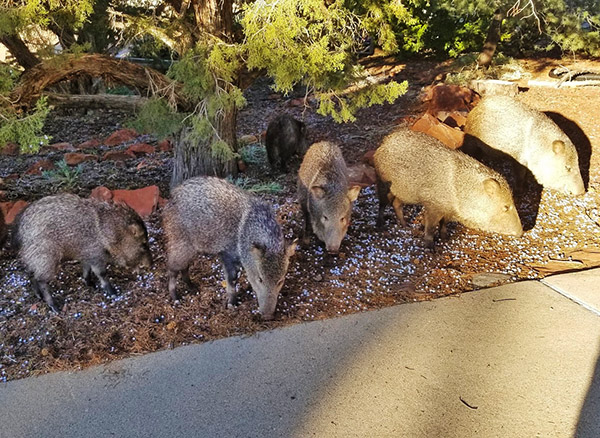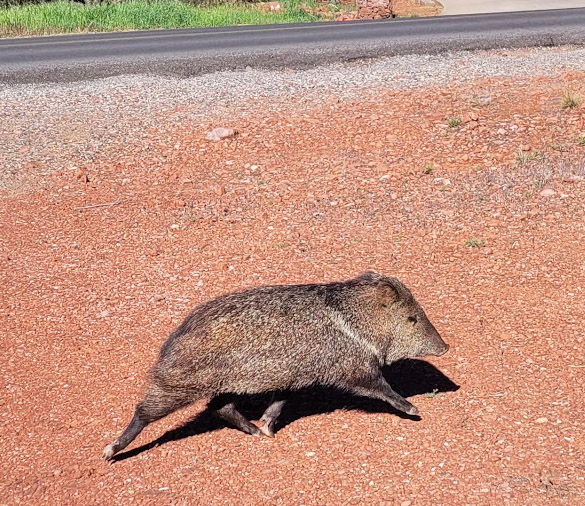By Joe Berk
Reading good buddy Airborne Mike’s javelina story brought back memories. I’ve been chasing pigs for more than 50 years and I only ever got three. Two were captured simultaneously via film (the two you see above); the other was nailed in Arizona and brought home for consumption. Yeah, I’m a Jewish kid who ate pork. Don’t tell anyone.
I’d been on javelina hunting trips numerous times when I lived in west Texas, and on every one of those trips, we never even saw a javelina (we could have just as easily described those expeditions as T-rex hunts, because we saw about as many of them). Good buddy Jose commented on Mike’s previous post that javelina make for good eating, but I’ve never had the pleasure and if offered, I’d politely decline. Although they definitely look piggish, javelina are actually not in the pig family. I’m told they are rodents. No thanks. I’ll forego rat tacos.
Help us bring more stories to you: Please click on the popup ads!
About that Mama Javelina and baby photo you see above: All those javelina hunting expeditions when we didn’t see a single javelina? Well, we stayed on an Arizona guest ranch one year (not hunting anything except good times) and there were javelinas out the gazoo. We heard them snorting and grunting up a storm outside our cabin one night, so I went outside with my manual focus Minolta 35mm film camera and took a bunch of flash photos, moving the focus ring a little bit each time because I couldn’t see to focus in the dark. I got lucky with one of them. I didn’t know there was a baby javelina in the mix until I got the prints. The mama and her baby were only about six feet away (I was using the Minolta’s standard 50mm lens). A guy who saw that photo told me I was lucky Mother Javelina didn’t go after me.
I’ve been on three wild pig hunts (not javelina, but actual wild pigs). On the first one, we spent three days rooting around in northern California and we didn’t see a single pig. Our guide pointed out what he claimed was pig poop, but hell, it could have been any kind of poop. What do I know from pig poop?
On a second northern California wild pig expedition, we were skunked again. Not one pig and not one pig sighting. Not even pig poop this time. All I came home with was the worst case of poison oak I ever had. The itching was intense raised to an exponent, and nothing seemed to work except consuming large amounts of Budweiser, which I did for the three days it took to get over it. After that episode, I stayed away from hunting pigs for the next 30 years. Then, I got the bug again.

About five years ago good buddy Paul and I hunted wild pig in Arizona and we both scored. Our guide told me mine weighed about 130 pounds; Paul’s was a monster at well over 200 pounds. I got an education on that trip. The butcher asked us about the cuts we wanted, but I really had no idea (it was my Jewish ignorance about all things of the porcine persuasion). I let the butcher recommend what to do. When we reached the end of the list, I realized we hadn’t added bacon to the list and I asked about it. “There’s no bacon on wild boar,” he patiently explained while looking at the top of my head (I think maybe he was looking for a yarmulke, or maybe where I had my horns removed). “Bacon is belly fat, and wild pigs don’t have any.” Hmmm. Whaddaya know.
That butcher’s guidance about wild pigs lacking fat had further implications. The meat had absolutely no flavor. Zip. Nada. Zilch. No fat, no flavor. I made a lot of chili with that meat over the next year (cumin, red chili flakes, and Anaheim chiles bring their own flavors). But one of the “cuts” was sausage and that was good because it included a little fat. I found a recipe for and made a wild mushroom and pork sausage barley casserole. It was outstanding, so much so it has me thinking about going pig hunting again.
More Tales of the Gun are here!
Never miss an ExNotes blog:





